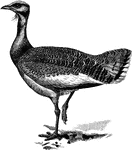Clipart tagged: ‘Otis’

Great Bustard
"The Otis Tarda, the Great Bustard, which, as a native only became extinct in Norfolk about 1838, used…

Elwell Otis
A soldier born in Frederick City, Maryland, March 25, 1838. After graduating at Rochester University,…